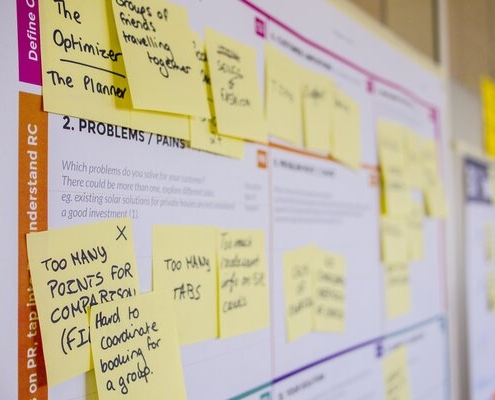Defeat scope creep with effective change approval criteria

Photo by Daria Nepriakhina from Unsplash
Scope creep is an insidious ooze of changes that can sink a project. Robust change management that thoroughly evaluates the merits of proposed scope changes is key to thwarting the creepy scope threat. One place to start is with solid change approval criteria.
Typically, change approval criteria evaluates:
- How scope changes
- Project costs added or removed due to scope change
- Schedule changes due to scope change
These evaluations are enough for small projects or very minor changes. For more significant scope change, it’s better to strengthen your change approval criteria.
How does the scope change affect project risk? Change-related risk can vary. Adding new technology, tightening deadlines, or deploying multiple changes simultaneously can challenge your business. Examine the risk each change brings to your project and the business.
Does the scope change add stakeholders to the project? Adding stakeholders to an existing project can trigger replanning, alter success criteria, or lead to issues with prioritizing requirements. These activities can be very disruptive and should be carefully evaluated before approving a change.
Is additional integration involved? Increased integration of technical tools, business processes or both will add complexity to your project and expand your need for testing. This can also require additional specialized personnel on your project.
Are multiple vendors required? Multiple vendors add contract management time. In addition, vendors working together can add complexity and conflict, as vendor expectations and agendas may differ. Examine your history with vendors to assess the merit and impacts of a change.
Does the proposed change support the spirit of the project’s original scope? Ambitious or creative stakeholders can recommend project scope changes that won’t enhance or expand the original intent and business case for your project. Evaluate changes against the initial project purpose to ensure your projects remain focused and stay within triple constraint expectations.
Do you use other criteria to evaluate proposed project changes? If so, share with us in the comments section.
For more about change management, check out Scott Mautz’ Change Management Foundations course.
Coming Up
Project 2021 and Project Online Desktop Client Essential Training will be published in a few months.
LinkedIn Office Hours April 6, 2022, 1:00PM MT- Embracing an Entrepreneurial Mindset in an AI-Driven World
Yesterday’s future is today’s reality. In order to fully take advantage of that reality, professionals need to think entrepreneurially while leveraging the latest technological advancements such as AI.
In this Office Hours session, Oliver Yarbrough and Bonnie Biafore will discuss how you can grow you career by –
– Harnessing an entrepreneurial mindset
– Leveraging AI to deliver successful projects
– Adjusting your outlook and approach to delivering value
– …and so much more
The world is changing. Ask yourself, “How will I adapt to these changes, so I can advance?”
LinkedIn Office Hours April 13, 2022, 1:00PM MT- Prerequisites for a Project Management Entrepreneur
Have you thought about going out on your own as a project manager, instead of being an employee? Seyi Kukoyi, PMP, and Bonnie Biafore, PMP, provide guidance for that journey in the course Become a Project Management Entrepreneur. But being your own boss isn’t for everyone. In this LinkedIn Office Hours event, Seyi and Bonnie welcome John Riopel and Oliver Yarbrough to a panel discussion about what you need to know before diving into the deep end of the PM entrepreneur pool. We will cover how to tell if you’re cut out for entrepreneurship; the difference between being a contractor and a business owner; skills and tools you need to be a PM Entrepreneur, and steps to take before you quit your job.
